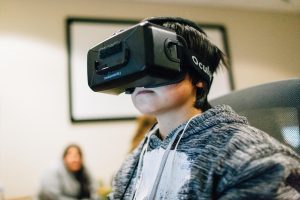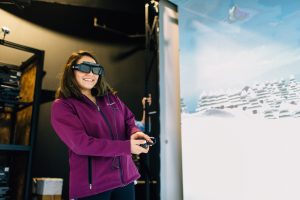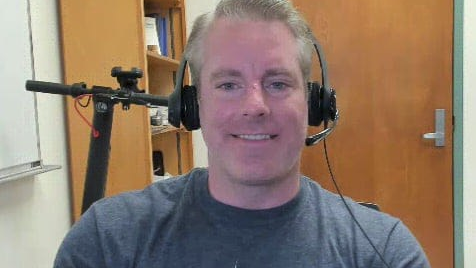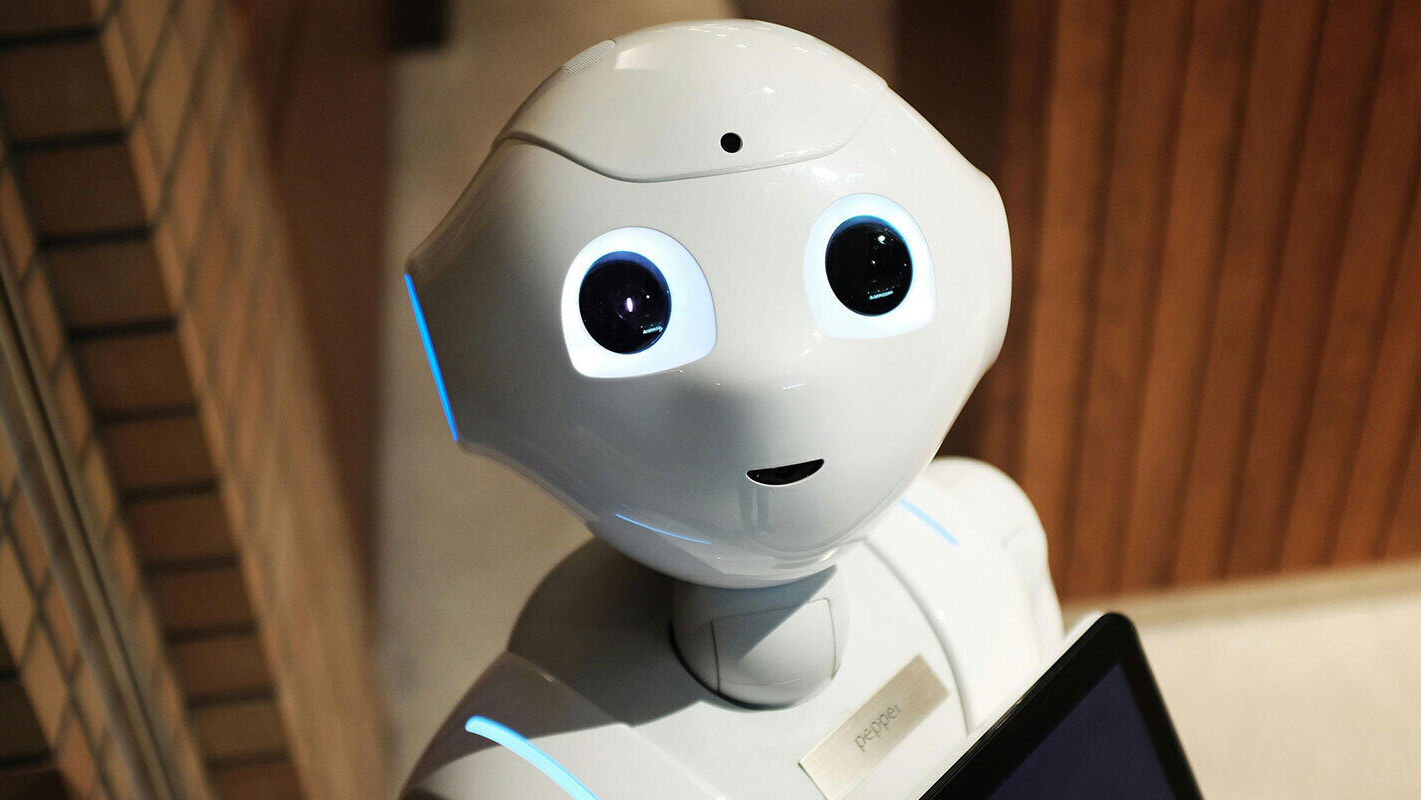Outreach in 3D
 “Nicely done,” says Kevin Ponto as an eighth grade student crosses the finish line at the bottom of the virtual ski hill, “who wants to go next?”
“Nicely done,” says Kevin Ponto as an eighth grade student crosses the finish line at the bottom of the virtual ski hill, “who wants to go next?”
Ponto is an assistant professor of design studies in the Living Environments Laboratory at the Wisconsin Institute for Discovery where he studies virtual reality technology – but last Friday, he became a ski instructor for about one hundred visiting middle and high school students who were on campus for a conference with the Wisconsin Indian Education Association (WIEA).
Each student got his or her turn to try the ski mountain simulation in the CAVE, the fully-immersive 3D virtual reality environment, while Ponto and postdoctoral researcher Markus Broecker described the technology behind the game.
The Living Environments Lab, led by Patricia Flatley Brennan, has made some great scientific accomplishments, from studying healthcare in homes to exploring the experience of virtual reality. But the lab doesn’t stop there. For Brennan, outreach can be just as important as a scientific breakthrough. “I really believe in the Wisconsin Idea, and we try to make that a part of what we do here,” says Brennan, referring to the philosophy that the university’s knowledge should influence lives beyond campus and benefit every corner of the state.
“This group is really strong on volunteering… they’re just great”
Brennan and her team are committed to sharing their knowledge and engaging imaginations, and have done so through dozens of outreach events. “This group is really strong on volunteering,” says Brennan, “all the people who are here signed up including three faculty and our scientist. They’re just great.”
In addition to monthly open houses for researchers, the lab has been a part of a broad range of outreach activities, including events at the Wisconsin Science Festival featuring tours in the CAVE, an exhibition of Virtual Taliesin at the Marathon County Public Library in Wausau, and last year’s Model This! competition, in which high school students incorporated elements of the sciences as well as art and aesthetics to help design an educational virtual version of UW-Madison’s D.C. Smith Conservatory.
Last Friday’s event brought American Indian students from all over Wisconsin into the CAVE and development lab at the Living Environments Laboratory for a hands-on experience with state-of-the-art technology. “It introduces science in a fun way,” says Brennan; “it helps them to see that by knowing science we are able to do stuff like understand trajectories or vectors or planar surfaces, but they’re applied in an interesting way.”
In the development lab, systems programmer Ross Tredinnick guided demonstrations of the Oculus Rift, a commercially-available head-mounted VR device. Students explored a real apartment that had been scanned and rendered as a 3D environment for home healthcare research. Meanwhile, Brennan told another group of students how the lab’s technology was used by law enforcement to scan and investigate a crime scene and by historians to digitally preserve an architectural masterpiece.
 For Katy Butterfield, a sixth grade teacher at the Waadookodaading Ojibwe Language Immersion School, getting her students into the lab was a great way to get them excited about STEM fields: science, technology, engineering, and mathematics. She accompanied a few of her students to Madison for the conference and watched as they explored virtual scenes.
For Katy Butterfield, a sixth grade teacher at the Waadookodaading Ojibwe Language Immersion School, getting her students into the lab was a great way to get them excited about STEM fields: science, technology, engineering, and mathematics. She accompanied a few of her students to Madison for the conference and watched as they explored virtual scenes.
“We’re using these kinds of opportunities to get [our students] into a new atmosphere and exposed to science and technology,” she says. Their immersion school, while one of the highest performing of its kind, can be isolating. Through the Living Environments Lab, they have formed a connection with the state’s flagship research institution.
It is through these kinds of connections that the Wisconsin Idea thrives. Brennan estimates that some 4,000 people have experienced the CAVE in the last five years, making it a powerful tool not only for research, but also for outreach.
— Nolan Lendved





